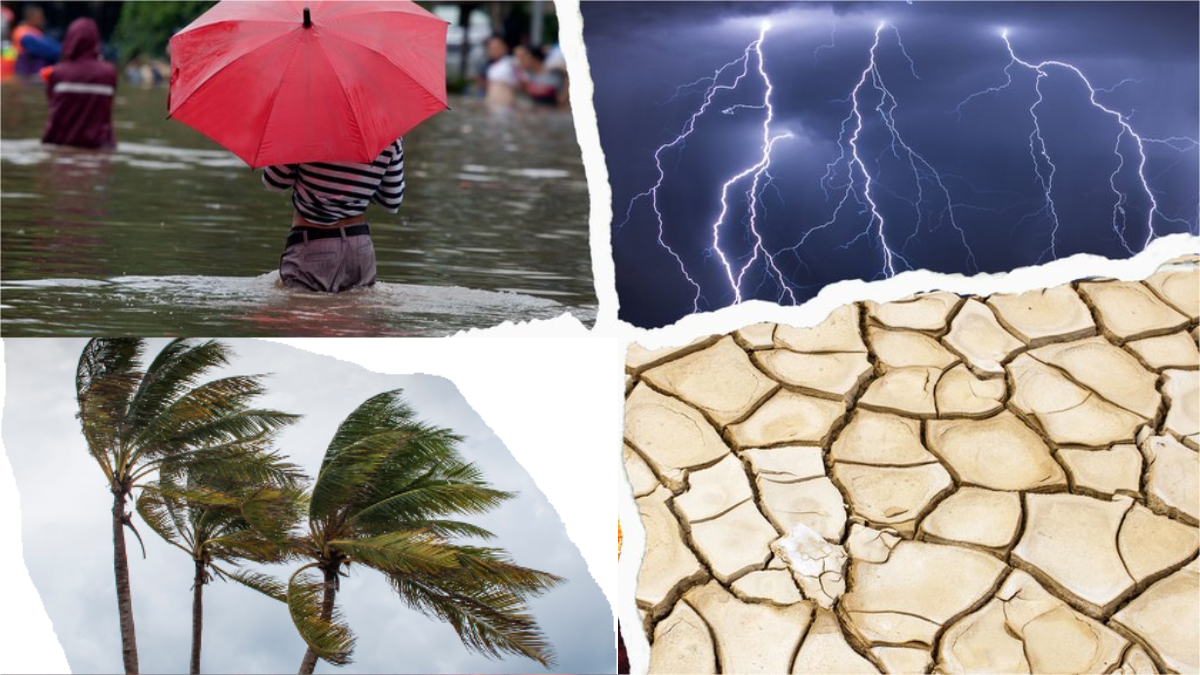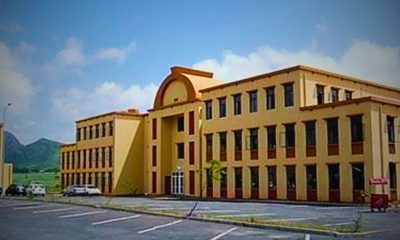News
Flooding Woes: Climate Change is Not the Only Culprit

Prem Saddul, a geomorphologist-hydrogeologist, explains in simple terms the reasons behind the increasingly frequent floods. It is not all about climate change.
Cementing, deforestation, and negligence play a role. Ultimately, humans are the biggest culprits. The floods are becoming more and more common.

Prem Saddul elaborated further:
Is the lack of infrastructure the cause? Flash floods have recently become the top natural risk in Mauritius, with devastating consequences.
We have yet to learn from the past. By continuing to blame the effects of climate change, we are missing the point.
From my observations, the main cause is humans building with too much concrete in flood-prone areas and practicing deforestation, disrupting the proper functioning of watercourses.
When the flow increases to the point where the river overflows and leaves its bed, a flood occurs.
In mountainous areas and basins, these flash floods resulting from high flows are destructive. Tranquebar, Vallée-Pitot, Champ-de-Mars, Les Guibies, for example, are areas located inside “amphitheaters” where the soils are highly impermeable with magnesium clay.
During heavy rains, the water, unable to infiltrate the ground, remains on the surface and quickly runs off to the watercourses to swell them, gaining speed and causing damage along its path.
Furthermore, the lack of maintenance of watercourses, such as at the bridge level, can promote the formation of “debris jams” that block the flow of water. Climate change will accentuate meteorological extremes.
It is important to be proactive and ensure that floods are evacuated in minimal time. For example, Port Louis should be a drain city instead of a rain city.
That should be the primary objective. Bushes and trees are being cut down and removed to make way for villas.
Could this affect the movement of rainwater? Indeed, there is a clear link between deforestation and flooding. Bamboo hedges, bushes, and trees form a natural area that acts like a sponge, intercepting and retaining a significant percentage of rainwater.
Additionally, they create porous and filtering soils that can store large volumes of water and promote infiltration, thus reducing the intensity of floods, river overflows, and potential damages that could occur. Preserving or restoring these natural areas is essential.
What contributed to the collapse of the house in Tranquebar? The collapsed house on Swami Sivananda Street, Tranquebar, is directly linked to the consequences of the torrential rains on that sad Sunday (21st April).
Several reasons are being discussed. There was a lot of rain and a phenomenon accentuated by climate change, but “the hand of Man” is also responsible.
Tranquebar is located at an elevation of 60 meters in a narrow corridor bordered by mountains with steep slopes.
Around four mountain streams converge in the village and feed the Pouce Stream. The soils are highly impermeable, which favors surface torrents.
I visited the area and followed the Pouce Stream and the streets to the Causeway.
I observed that the drains are not well-maintained, and there are bottlenecks downstream of the bridges.
It is essential to prepare storm hydrographs to analyze the time factor between heavy downpours and the maximum rise of water along rivers, canals, and drains.
Houses are increasingly being built higher in the Tamarin region, on the mountainside, or in Sorèze.
What are the risks? Our mountains are over 8 million years old, and over time, the slopes below have become an area of colluvial accumulation, which means deposits of sediments and debris.
This makes the area very unstable with a slope of over 30°. The risks of landslides, and even rockfalls, have increased. A geophysical study I conducted in 2010 on the slopes of the Tamarin Tower showed very distinct signs of this instability.
There were cracks on the walls, surface water flow, leaning power pylons, and trees. Granting building permits in these solifluction zones poses a major risk.
Can building on the slopes flood the properties of those living at the foot of the mountains? Yes. A typical example is the village of Fond-du-Sac, located near the Butte-aux-Papayes volcano, a hill of 142 meters with slopes extending to the village.
The hill was once under sugarcane cultivation and wooded at the top. Since 2000, the hill has been covered with concrete, asphalt, and transformed with villas.
All of this has made the slopes of the hill impermeable, and with each downpour, the streets turn into streams.
The heavy rainfall episodes of 2013, 2016, and April 2019 triggered devastating flash floods affecting hundreds of residents and businesses.
The risks are similar for residents at the base of the Tamarin Tower and other mountain slopes.
Source: l’Express











